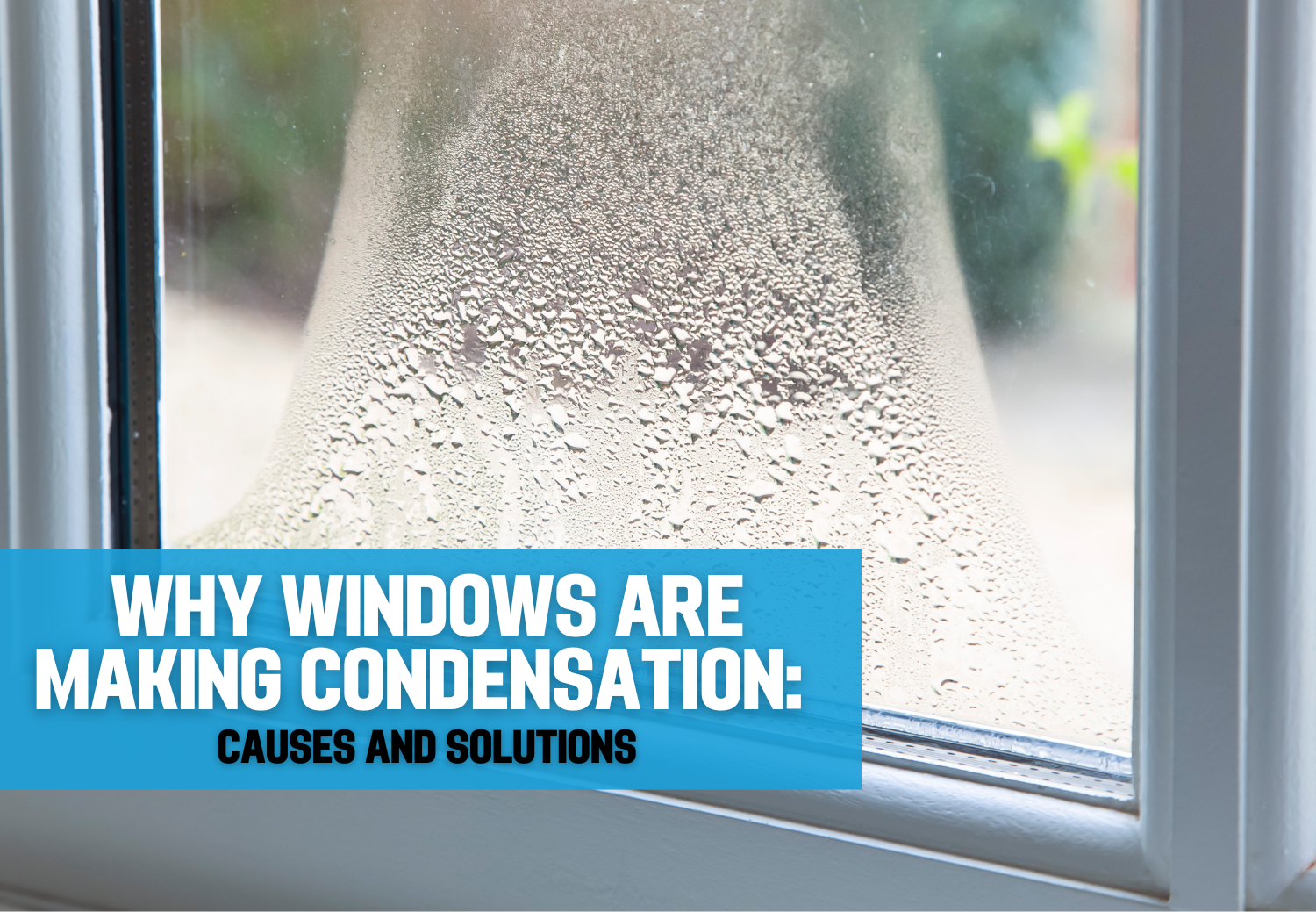Call today to schedule a FREE estimate!
Serving the State of Maryland and Pennsylvania
Blog #91
Why Windows Are Making Condensation: Causes and Solutions

Why Windows Are Making Condensation: Causes and Solutions
6/17/2024
Condensation on windows is a common issue that many homeowners face, especially during the colder months. Understanding why windows create condensation and how to address it can help maintain a comfortable, healthy, and energy-efficient home. At BT Window & Doors, we prioritize educating our clients on how to handle such issues effectively. In this comprehensive guide, we will explore the causes of window condensation and provide practical solutions to manage and prevent it.
What Causes Window Condensation?
Condensation occurs when water vapor in the air comes into contact with a cold, impermeable surface like glass, releasing moisture as water droplets. Several factors contribute to this phenomenon:
1. Lack of Ventilation: A common cause of window condensation is poor ventilation. When moist air is trapped inside the home without a way to escape, it can accumulate on cool surfaces, such as windows.
2. Poor Insulation: Windows with poor insulation tend to be colder than well-insulated ones, making them more prone to condensation. Single-pane windows or older windows without energy-efficient features often experience this issue.
3. New Construction or Remodeling: Newly constructed homes or recently remodeled spaces often have higher moisture levels. Freshly installed concrete, paint, and other building materials release moisture into the air, contributing to condensation.
4. Humidifiers: Humidifiers add moisture to the air, which can be beneficial in dry climates. However, during cold weather, this added moisture can increase the likelihood of condensation on windows.
5. Houseplants and Aquariums: While houseplants and aquariums can enhance the beauty of your home, they also add moisture to the indoor air, potentially leading to condensation on windows.
Ways to Reduce Window Condensation
Managing window condensation involves addressing its root causes. Here are several effective strategies to reduce and prevent condensation:
1. Improve Ventilation: Enhancing ventilation in your home is crucial to managing moisture levels. Open windows and doors to allow moist air to escape and fresh air to enter. Installing exhaust fans in high-moisture areas like kitchens and bathrooms can significantly reduce indoor humidity.
2. Use Fans: Turn on fans when cooking or taking hot baths or showers to help disperse moisture. Ceiling fans can also improve air circulation, helping to distribute humidity more evenly throughout your home.
3. Use Moisture Eliminators: Desiccant bags and other moisture eliminators can be placed near windows to absorb excess moisture from the air. These products can be particularly effective in small, enclosed spaces.
4. Use a Dehumidifier: During the winter months, when condensation is more likely, using a dehumidifier can help maintain optimal indoor humidity levels. Dehumidifiers remove excess moisture from the air, reducing the chances of condensation forming on windows.
5. Turn Off Humidifiers: If you use humidifiers to combat dry air, consider turning them off on cold days when condensation is more likely to occur. This simple adjustment can help maintain a balance between comfort and moisture control.
6. Limit Houseplants and Aquariums: To minimize additional moisture in your home, try to keep houseplants in sunny rooms and avoid overwatering them. If you have aquariums, ensure they are covered to reduce the amount of water vapor they release into the air.
The Impact of Excess Condensation
While condensation on window glass alone isn't harmful, excessive condensation can lead to several issues:
1. Damage to Paint and Finishes: Excess condensation can drip down and cause paint to blister, crack, or peel. It can also warp and damage window frames over time.
2. Mold and Mildew Growth: Standing water from condensation can create a breeding ground for mold, bacteria, and pests, posing health risks to occupants and potentially causing structural damage.
3. Decreased Energy Efficiency: Moisture issues can compromise the effectiveness of your windows' insulation, leading to higher heating and cooling costs.
Choosing the Right Windows to Prevent Condensation
At BT Window & Doors, we offer a variety of high-performance, energy-efficient windows designed to minimize condensation. Here are some features to consider when selecting new windows:
Understanding the causes of window condensation and implementing strategies to manage it can significantly improve the comfort and energy efficiency of your home. At BT Window & Doors, we are committed to providing high-quality, energy-efficient windows and expert installation services to help our clients maintain a healthy and comfortable living environment.
If you're considering upgrading to more efficient windows, contact us today for a consultation. Let us help you find the best solutions to keep your home cozy, dry, and energy-efficient all year round. Call today to schedule a FREE estimate!
#WindowCondensation #WindowRepair #WindowSelection #EnergyEfficiency #ImproveYourHome #HomeRenovation #HomeImprovement #WindowsAndDoors #Windows #WindowInstallation #Maryland #MD #Pennsylvania #PA
<< Prev: A Comprehensive Guide to Choosing the Right Windows for Your Home, 5/30/2024
>> Next: How to Know If Your Window Seal is Broken: Causes and Solutions, 6/28/2024
